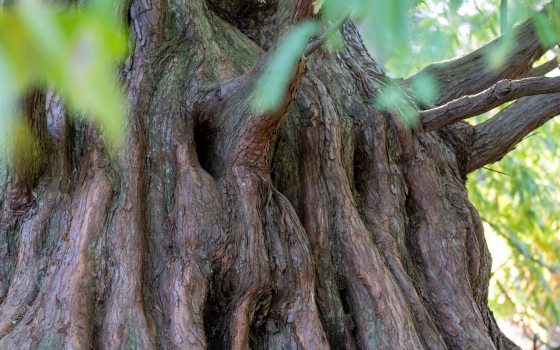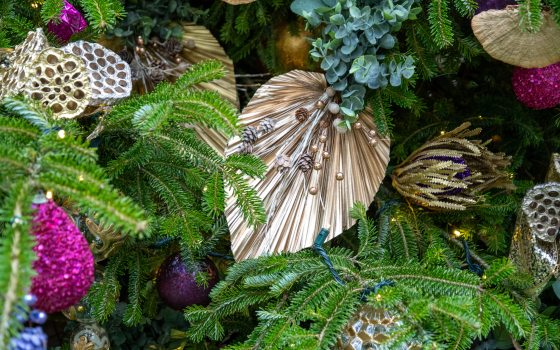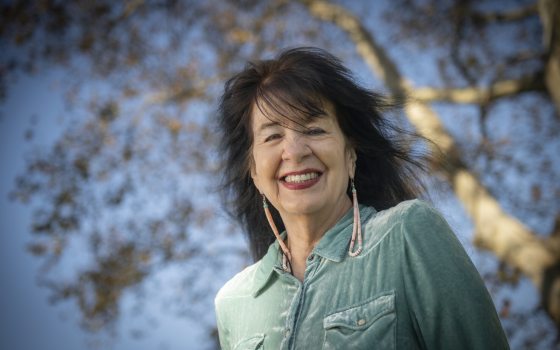As you stroll along Longwood’s serene tree-lined paths, you may unexpectedly encounter one of the world's most ancient plants. It boasts delicate pinnate leaves, and its foliage color subtly changes with the shifting seasons. Before its discovery, people could only imagine its former grandeur through its fossils. Nowadays, its descendants are scattered across the globe—including nearly 80 at Longwood, found in Oak & Conifer Knoll, Peirce’s Woods, and the Italian Water Garden, among other areas. This plant is none other than dawn redwood (Metasequoia glyptostroboides), the "living dinosaur" of the botanical world, which was discovered in China more than 80 years ago. The fascinating story behind this discovery is a scientific legend of courage and perseverance, and it is closely intertwined with Chan Wang, the founder of Shenyang Arboretum in China—the very place I lead the Basic Information Department as an engineer, and from where I came to Longwood as a current Longwood Fellow.
In 1943, during the tumultuous period before the founding of New China, the country was engulfed in war. At that time, Chan Wang, working at the Central Forestry Experiment Research Institute, received an invitation from Shunqing Li, the Director of the Forestry Department of the Ministry of Agriculture and Forestry, to conduct an exploration to the forests of Shennongjia in Hubei Province. This was a mysterious and pristine forest, virtually untouched by humans and teeming with wild beasts. Friends and colleagues around him shook their heads, believing that such a journey would be a near-death experience. However, Chan Wang was inherently driven by an unwavering passion for scientific exploration. He firmly believed that the more mysterious and perilous a place was, the more likely it held undiscovered scientific truths. Accompanied by his assistant, Chan Wang set off from Geleshan, the suburb of Chongqing.
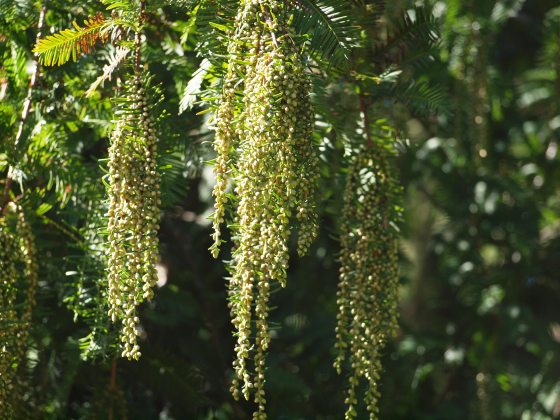
Long, pendulous clusters of immature cones hang gracefully from the branches of a Metasequoia glyptostroboides, highlighted by the soft sunlight filtering through the feathery, deciduous foliage, as photographed at Longwood. Photo by Helen Wallace.
The night he arrived in Chongqing, a mouse bit his toe and left it bleeding in the inn where he was staying. The innkeeper warned him that such a bite could be life-threatening and that those afflicted often faced a slim chance of survival. Moreover, the innkeeper mentioned that a murder had just occurred in the very room he was staying in, with a corpse discovered a few days prior. Thus, he advised Chan Wang against continuing his journey. But these unexpected events and ominous hints did not deter his resolve [1].
Braving the constant risk of Japanese air raids, he took a boat to Wanxian County and stayed overnight at the Wanxian Senior Agricultural Vocational School, where his classmate Longxing Yang worked. However, the next day, he developed a fever that lasted for three or four days. The doctor deemed his pulse and heart condition unfavorable and advised him against proceeding further. But when he heard from Longxing Yang about a peculiar large tree in Modaoxi near the Hubei border in Wanxian County, locally known as the "divine tree" (locals call it Shui Suo), yet unrecognized by anyone, his curiosity was piqued. He was convinced that this must be a unique tree, and thus, he made up his mind to see it for himself. However, reaching Modaoxi required a long hike on foot. Moreover, this area, located at the junction of Sichuan and Hubei, was notorious for frequent bandit activities, making it extremely dangerous. Additionally, before his departure, owls hooted every night, and a school worker passed away during this period. Locals considered these as bad omens and urged him not to go forward. Nevertheless, driven by his desire to investigate this tree, Chan Wang abandoned his original plan of taking a boat and chose to walk to Modaoxi instead [1].
Chan Wang's spirit of exploration never wavered. He traversed mountains and rivers, conducting on-the-spot investigations and taking notes along the way. After three arduous days of hiking, he arrived deep in the night and faintly saw the outline of the divine tree. It had a towering canopy and a thick trunk. The next morning, he carefully observed the tree's shape, branches, leaves, and cones, concluding that it was a previously unseen and unique species. He collected several specimens, including more than 20 complete stalked cones (specimen number: C. Wang 118; collection date: July 21, 1943) [2].
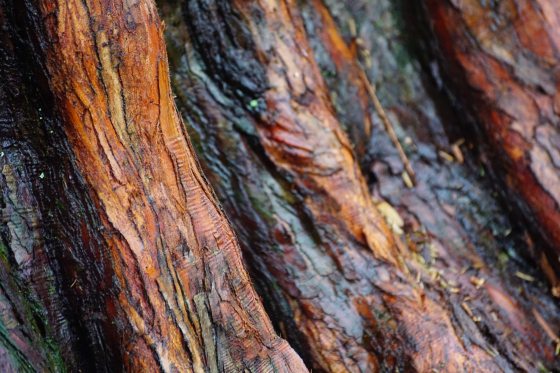
Spectacular detail of Metasequoia bark, as photographed at Longwood. Photo by Yovenn Peignet.
Upon returning to Chongqing, Chan Wang continued his research on the specimens. He noticed similarities between this plant and Taxodium distichum (Bald cypress), but since there was no distribution of the Taxodium in China, he believed it could not be Taxodium distichum. He also found that the plant resembled Glyptostrobus pensilis (Chinese swamp cypress), but its cones and leaves differed from those of Glyptostrobus pensilis, leading him to suspect it might be a new species. Due to a lack of sufficient reference materials at the time, Chan Wang was unable to name it definitively. Instead, he temporarily wrote the Latin name of Glyptostrobus pensilis on the specimen, followed by a question mark [2].
In 1944, he entrusted Zonglun Wu from Central University to deliver the specimen to Wan-chun Cheng for further identification. In 1946, Wan-chun Cheng sent his graduate student Chi-Ju Hsueh to collect additional specimens. Hsen-Hsu Hu and Wan-chun Cheng published Metasequoia glyptostroboides on May 15, 1948 [2].This academic relay that spanned nearly five years finally propelled Metasequoia onto the international stage.
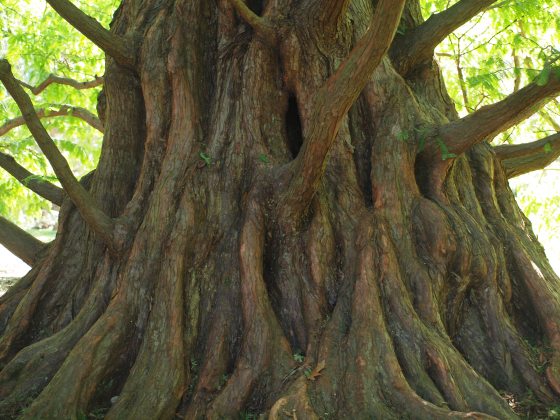
The stately trunk of Metasequoia, as photographed at Longwood. Photo by Helen Wallace.
Chan Wang was not only the collector of the first modern-living Metasequoia specimen for research purposes but also conducted systematic research on the specimen and facilitated its subsequent official publication. In a scientific sense, Chan Wang was the discoverer of Metasequoia, the first to make this significant find [2].
The discovery of the living-fossil species Metasequoia glyptostroboides sent shockwaves through the global botanical community. In 1946, Hsen-Hsu Hu promptly contacted E.D. Merrill, the Director of the Arnold Arboretum at Harvard University, and R.W. Chaney, a paleontologist from the University of California. In 1947, with funding from the Arnold Arboretum, Hsen-Hsu Hu organized the collection of Metasequoia seeds and sent them to the Arnold Arboretum. The seeds were then distributed by the Arnold Arboretum to various institutions and individuals across the United States. In 1948, Chaney traveled a long distance to Modaoxi to investigate Metasequoia, further enhancing its international influence and rapidly propelling it to stardom in the international botanical community.
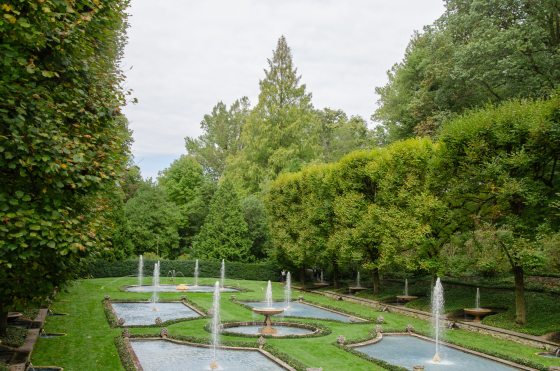
One of Longwood’s Metasequoia towers behind the Italian Water Garden. Photo by Amy Simon Berg.
The batch of Metasequoia seeds planted by the Arnold Arboretum in 1948 has now grown into towering giant trees. Even U.S. President Nixon named his yacht "Metasequoia," endowing Metasequoia with the symbolic meaning of international friendship. The Harvard University Herbarium houses the 1946 paratype specimen of Metasequoia, serving as an eternal witness to this historical chapter.
Metasequoia is a renowned living fossil and one of the greatest discoveries in the field of botany in the 20th century. Currently, it has been introduced and cultivated in over 80 countries across five continents. At Longwood Gardens, nearly 80 Metasequoia are given meticulous care, actively stewarded and supported as part of Longwood’s living collection.
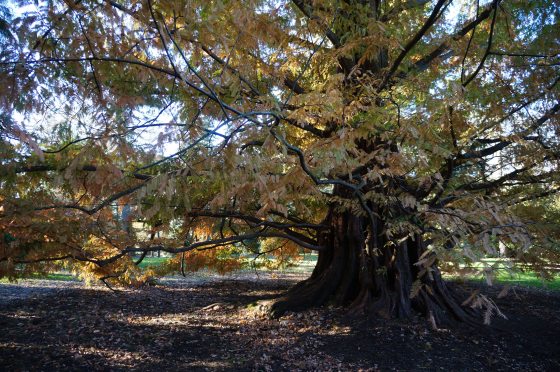
Changing Metasequoia foliage in Longwood’s Hillside Garden. Photo by Bryan Kottke.
The story of Metasequoia has long transcended the realm of plant taxonomy. From being a "divine tree" in Modaoxi, China, to becoming a towering giant tree in major parks across the United States, from the war-torn old China to the peaceful and prosperous new world, it has witnessed the unwavering persistence of scientific spirit and the close bond of international friendship. Chan Wang was an indispensable and pivotal figure in this legendary tale. Without his persistent exploration, the discovery of Metasequoia might have been delayed by several years or even decades.
This story tells us that true discoveries are never the result of mere luck. Instead, they are the product of unwavering persistence. Chan Wang's experience in discovering Metasequoia reminds us that scientific progress always requires those brave souls who are willing to face the unknown head-on. Perhaps this is the most precious revelation that Metasequoia offers us: the value of the relentless pursuit of exploration, for the mysteries of nature always await those daring enough to confront the unknown.
References
[1] Chan Wang. 2025. How did I discover Metasequoia glyptostroboides? Biodiversity Science, 33, 25045.
[2] Hong Qian, Guofan Shao, Qijing Liu. 2024. The history of discovering Metasequoia glyptostroboides. Biodiversity Science, 32, 24378.
Editor’s note: Learn more about Yan and our 2025–2026 Fellows Cohort in an upcoming blog post in the coming weeks.
